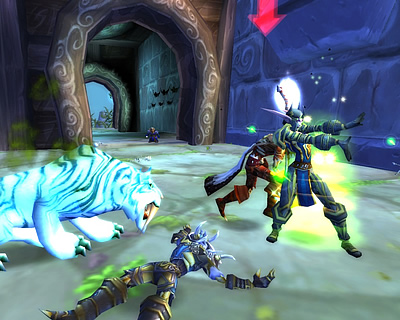It's all Hamlet Au's fault, really. I wanted to post more stuff. But the juxtaposition of Second Life today - a laggy, crashy place with rude newbies and an aloof, blundering Linden Lab - with ye olde Seconde Life and a dynamic Linden Lab, doing all it can to make some sense out of this world they have created, as described in Hamlet Au's book, was just too much to bear.
While "Making of Second Life" is a fairy tale (or "based upon a true story" at the most), the difference between then and now was still surprising. I needed more insight into Second Life residents, so I continued my literary virtual world sojourn with Tom Boellstorff's "Coming of Age in Second Life" and completed it with Castranova's "Exodus to virtual worlds". By then, the pieces were starting to fall into place. I retreated to my yak hut and meditated in the rain of prims - until understanding dawned.
Linden Lab is *old*
Linden Lab is far from a spry start-up, frolicking about, ready to challenge the world. It's been around the block and tried it all - so that now, when new and energetic employees have an idea, they can always be assured by their senior colleagues that this has already been tried in the past and failed. So, why bother? The asset server architecture, as it is, has always been enough - why update it? The users have always grumbled - so why listen?
We can only count on Linden Lab to make a mess of things occasionally. For all the rest, there is only us.
Second Life is not a world
A crucial element of the world, according to Castranova, is a shared mythos - a story that puts the world as you see it in a larger context. Another crucial element is a set of values, shared by the residents. With those, the world mythos can create and sustain itself; and, as long as the ratio of new users keeps under a certain limit, everything works - the old users are numerous enough to explain the world and the etiquette to the new users. Unfortunately, with exponential growth, this breaks down and we get what's called an Eternal September - a deluge of newbies with no comprehension of the world. This is the reason for prominent bloggers rueing the passing of the golden days of yore, when users were friendly (and Second Life never crashed, I imagine).
Second Life as a whole has no mythos; therefore, it is not a world. To make Second Life a world, we need to give it a story and put the user in context.
Given these two points, my proposal is simple: the users should create the Kindergarten of Second Life.
Call it the "Second Life Academy" or something appealing and mask it as a beginner's guide to UI and building; then, while explaining the dark arts of the SL client, teach the users the mythos of Second Life, based upon Tom's and Hamlet's books and recollections of respected oldbies. Teach them the story of Steller, who logged into the empty world one night and left the generations of users to come the jumping bean stalk; regale them with the story of Gibson sim and the transience of being; and instill in them the values of helping new users, respecting the old users, and revering the content creators.
It's up to us. Will we keep waiting for Linden Lab to make everything all right? Or do we want to accept and assume responsibility for making Second Life a world?



















































